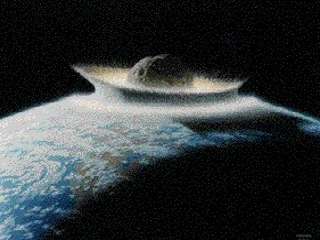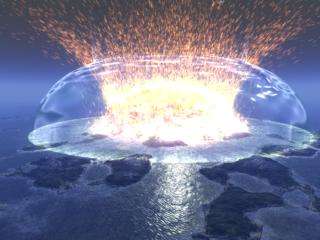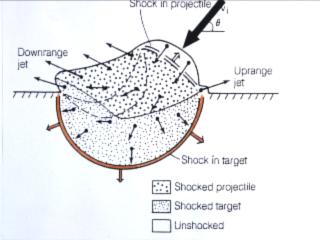Cratering |
Take a brief look at impact craters.
Small
(simple) craters are bowl shaped,
like Meteor Crater in Arizona.
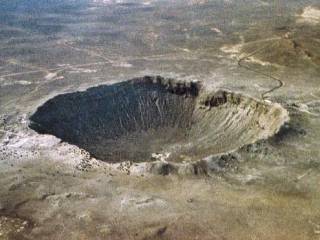
In large (complex) craters, the floor collapses upward to form a flat basin with a central peak.
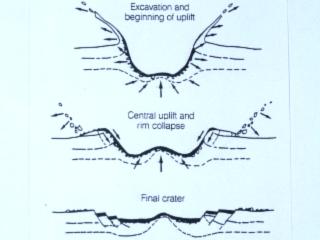
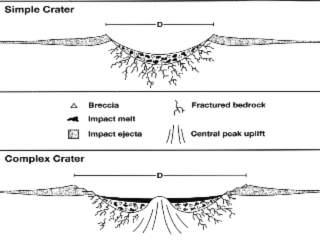
Numerical modelling shows that the larger the impact, the more mantle is uplifted under the center and ringed by a slight depression. Uplift in the center of the Shock Dynamics crater is quite large (map). -- Christeson, Gail L., Gareth S. Collins, Joanna V. Morgan, Sean P.S. Gulick, Penny J. Barton, Michael R. Warner. 2009. Mantle deformation beneath the Chicxulub impact crater. Earth and Planetary Science Letters, Vol. 284, pp. 249-257.
| Comets are mostly ice and dust. Meteorites are often "stony" (chondritic) conglomerates of light rock. The giant meteorite was probably chondritic or, less likely, made of much denser iron and nickel. A typical velocity is 20 km/sec (45,000 mph), vaporizing much of the meteorite and the target material on impact. |
|
An ejecta blanket is excavated and thrown out around the rim
|
|
Clouds of vaporized target material shoot skyward where the drops cool, harden and fall as a tektite strewn field
|
| Most meteorites hit the Earth at about 45° rather than straight on (perpendicular) |
|
Low angle impacts (20°-45°) jet some material forward and have side blowouts |
such as this ray pattern from the Moon crater Proclus
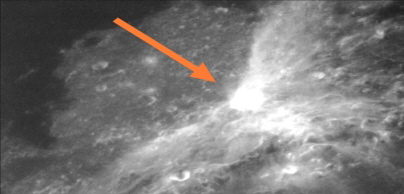
and a 15-km-long crater north of Acheron Fossae on Mars
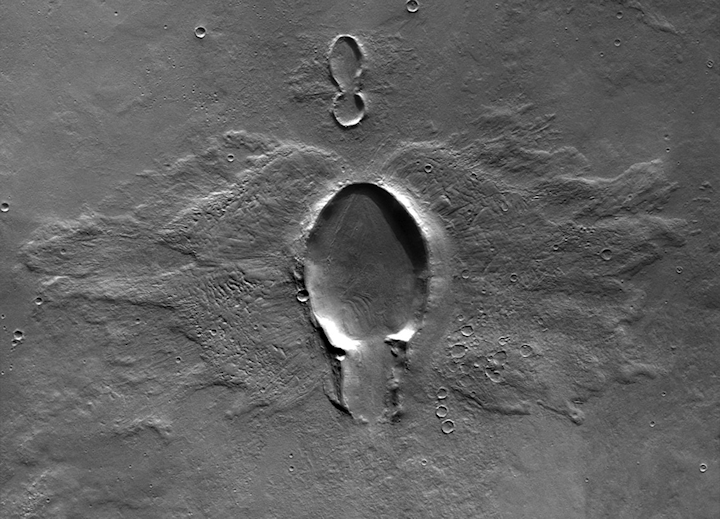
A hyper-velocity meteoroid 5 to 12 meters wide hit Mars on 24 December 2021. It traveled from southwest to northeast, making a crater ~150 m in diameter. The absence of up-range ejecta indicates an oblique (~30° elevation) impact. The crater floor has an irregular shape, with a depth of roughly 21 m. -- Posiolova, L.V., et al. 28 October 2022. Largest recent impact craters on Mars: Orbital imaging and surface seismic co-investigation. Science, Vol. 378, No. 6618, pp. 412-417 DOI: 10.1126/science.abq7704
Yang, Yingjie, Xiaofei Chen. 28 October 2022. A seismic
meteor strike on Mars.
Science, Vol. 378, No. 6618, pp. 360-361 DOI:10.1126/science.add8574
In this cross-section of the Earth's surface, continental crust (brown) rests upon the original oceanic crust (gray), with the upper mantle (red) below it. Normally, meteorites do not penetrate very deeply into continental crust, which averages 33 km in thickness. Consequently, almost all of the impact energy is dissipated up and away, leaving a shallow crater in the continental crust.
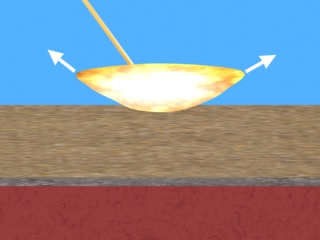
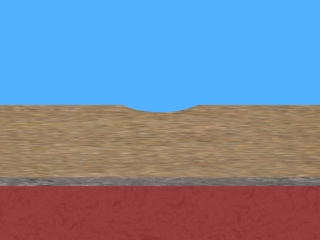
The giant meteorite in the Shock Dynamics event did penetrate deeply. On impact, much of its explosive energy was delivered to the surrounding continental crust, moving it away from the impact site. Only a hint of this colossal explosion remains in the oceanic crust.
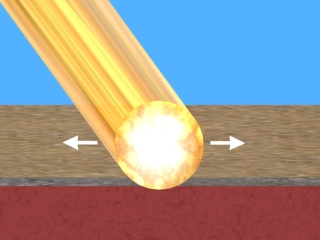
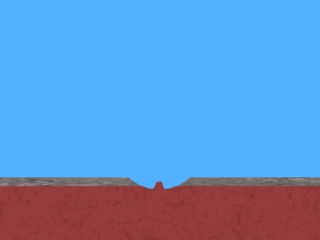
"On Earth today about 170 craters and structures are known that have formed by the impact of extraterrestrial bodies -- mostly asteroids. Most, if not all, of the impacting body is destroyed (melted and/or vaporized) during the crater-forming event, and, because the volume of the projectile is several orders of magnitude smaller than the volume of terrestrial material that is vaporized, melted, or brecciated, the minor amount of extraterrestrial melt or vapor is severely diluted by terrestrial material." "The detection of such small amounts of meteoritic matter within the normal upper crustal compositional signature of the target rocks is extremely difficult." -- Koeberl, Christian, Alex Shukolyukov, Gunter W. Lugmair. 2007. Chromium isotopic studies of terrestrial impact craters: Identification of meteoritic components at Bosumtwi, Clearwater East, Lappajarvi, and Rochechouart. Earth and Planetary Science Letters, Vol. 256, pp. 534-546.
The West Somali Basin is the floor of the Shock Dynamics crater, the central peak is Wilkes Rise/Aldabra Islands, and the shattered crater walls are found on Africa to the west, Madagascar to the south, and Australia far to the east.
